
COROS has settled into a roughly quarterly-ish update cycle, and their latest public beta launched today brings a number of new features to the platform, including expanding on some that their competitors have and some they don’t. I’ll be diving into the nuances of these features more in the coming days (been using them a bit now), but for now, let’s just quickly take a look at what’s new.
The following features will be coming to essentially everything except the Pace 1 & APEX 42/46mm watches. Thus, that means the Pace 2/Pace 3, Vertix series watches, and Apex Pro, APEX 2 series watches, will all get these updates.
– Adding screen mirroring of watch to phone (both for data fields, and navigation)
– Adding Virtual Pacer feature (set a specific target pace/distance, and it’ll keep you on track)
– Added new Climbing (e.g. rock climbing) GPS track accuracy optimizations (note: APEX 2 Pro, Vertix 2 only)
– Added new FTP test (Functional Threshold Power) for cycling
– Redesigned workout/activity screens
– Added ability to do both a structured workout and navigation for running sports
– Added ability to create climbing (e.g. rock climbing) workouts on app
– Added climbing training plans
– Added more bouldering grades (UIAA/Ewbank/Australian) – Note, not for Pace watches
– Made changes to recovery time algorithm to be less crazy
– Now supports Strava notes on sync of Running Form & Fitness tests, and Bike/Indoor Bike
– Structured swim workouts increased interval granularity to 5m
As with before, you can join the COROS Public Beta here, with these updates expected to hit products in the May timeframe. Here’s a little chart from COROS indicating which units get which things on which dates.
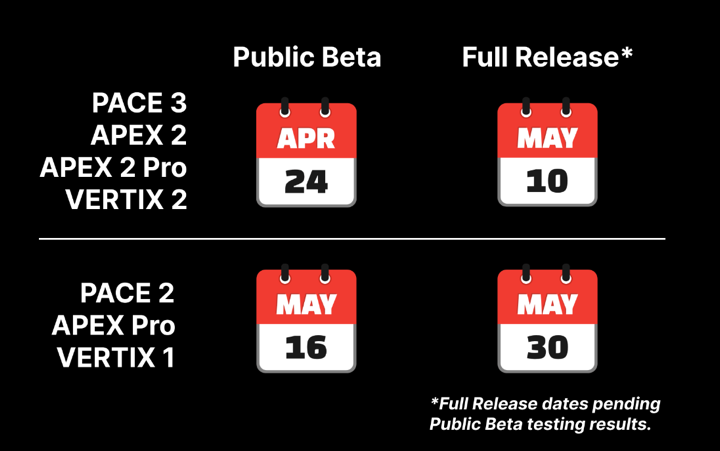
Now, let’s quickly hit some of the more unique features here. First up is the ‘Screen Mirroring’. Albeit, COROS says not to call it screen mirroring, but something else. At the moment, they don’t have another name for it. Thus, I’m calling it…screen mirroring. Which, is what it is.
This feature lets you effectively mirror your screen from watch to phone. This is very similar to what Apple launched last summer in WatchOS10 with their also-don’t-call-me-screen-mirroring feature. However, in this case, COROS actually goes a little beyond what they do.
At the basic level, the idea here is that for indoor workouts this could be super useful for an indoor cycling or such scenario where looking at your wrist constantly on a watch isn’t as awesome as just seeing your stats on the phone. Thus, like this:
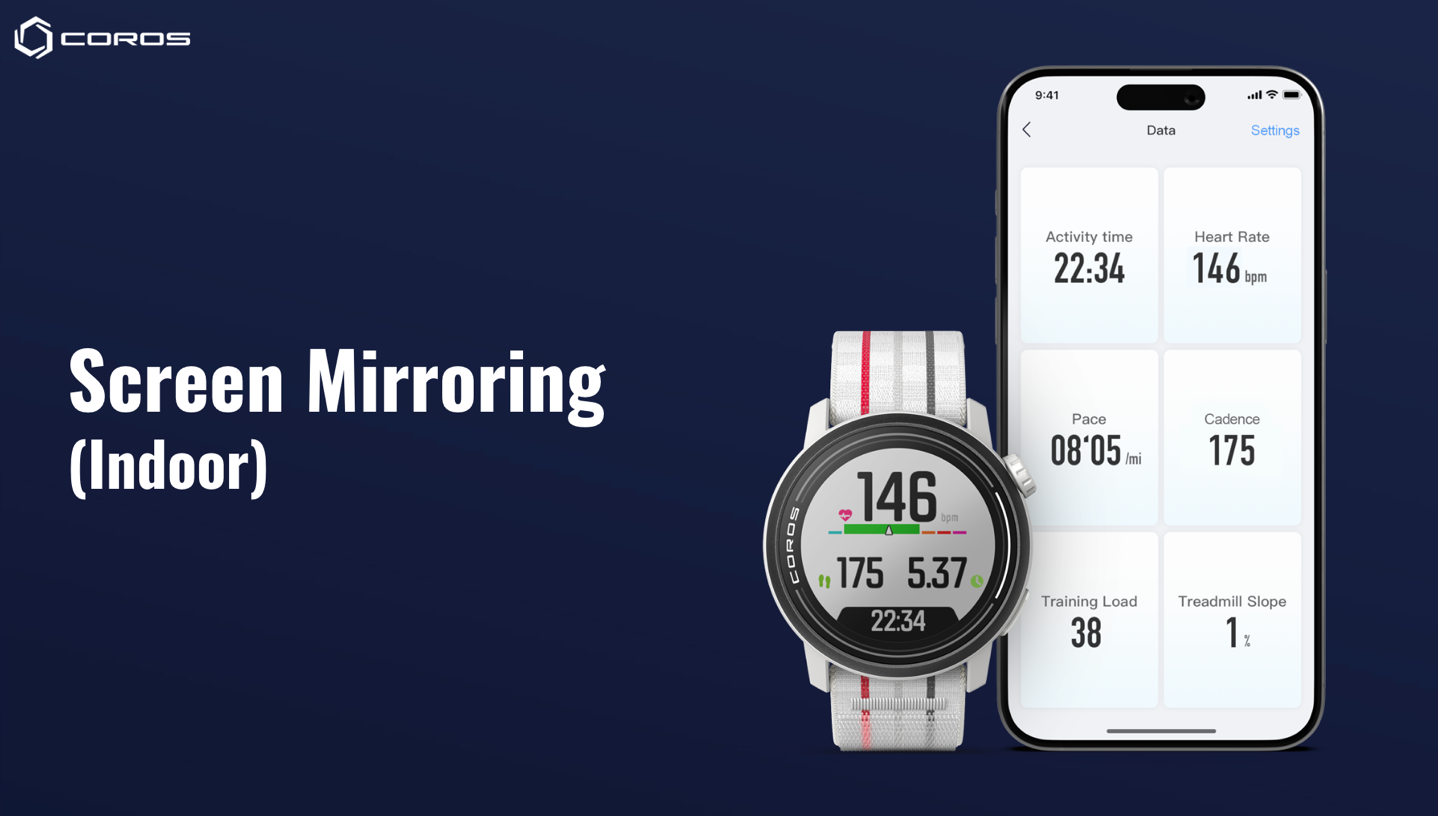
Of course, that also works well for countless other gym scenarios, as well as bike commuting where you might have your phone on a handlebar mount or such. All of this is basically the same as what Apple does today.
(Side note: Because it’s not super clear how to access this feature, pro tip time! You need to be in an activity, with said activity actually started. Then, back on the app, it’ll show a swirling circle in the upper left corner. Once that’s done, you’ll see the screen mirroring page.)
However, where COROS differentiates is around the screen mirroring of the map/navigation features. Apple doesn’t have built-in (to the workout app) navigation today. In this scenario, you can use the COROS app to show your current route atop a map on the phone. In discussions with COROS they noted that while the watch is great for many things, they admit that a small wearables screen isn’t always the easiest to see map related features.
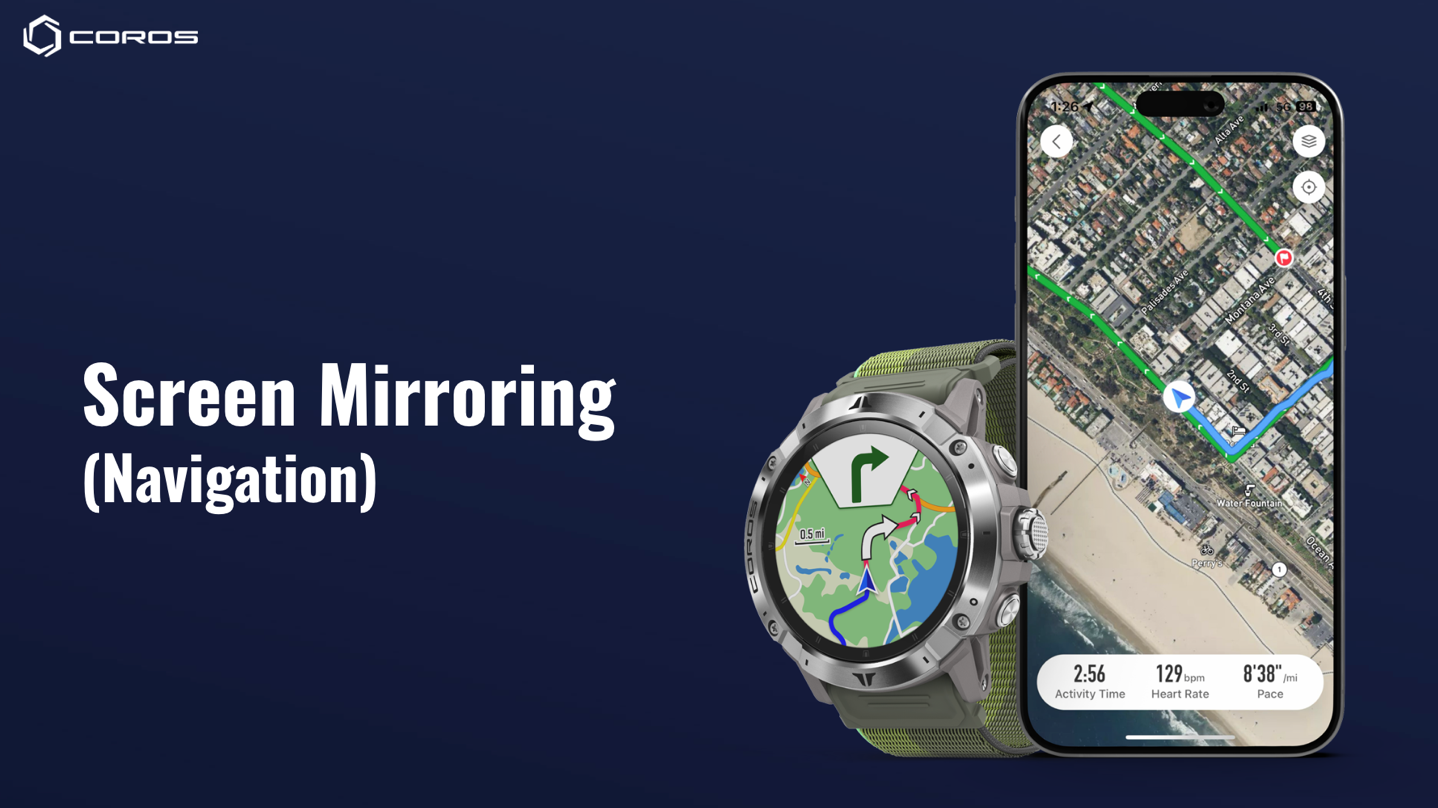
Thus, this gives you the choice to use either phone or watch. You can zoom in/out, move around, and check out data that’s not on your watch. For example, COROS doesn’t show any street/road/terrain/etc names on their watch maps, but do show them on the phone map apps. To a degree, this helps close a bit of the gap they have their, relative to their competitors.
Next, is Virtual Pacer. This is relatively straightforward. You set a target distance, and a target time, and then it will figure out the pace, and keep you aware of how you compare to said pace.
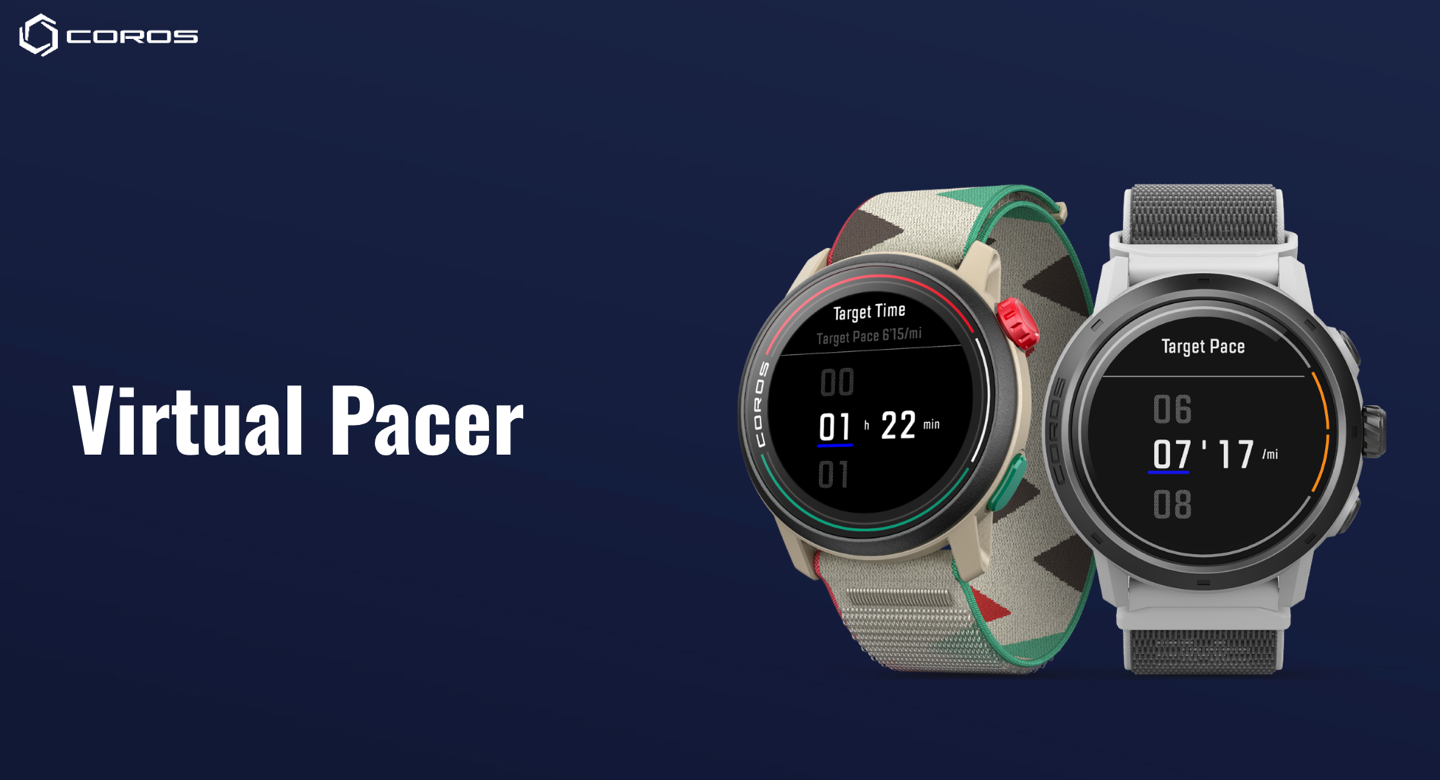
Note this is not something like Garmin’s Pace Pro (where you load in race plans that adapt to a route’s terrain/etc), but rather, is the same as the more simplistic Garmin Virtual Partner.
Next, COROS has added a cycling FTP test. COROS says this will let you suffer less than a normal FTP test. I’ll give this a whirl next week. Frankly, I’ve done far too much suffering the past 7 days, with 3-4 swim/bike/trail run workouts a day, to get any valid data from my legs at the moment.

Following that, there’s new ‘Climbing GPS’ optimizations. These are interesting, though, only applicable to the rock-climbing type sports (not trail running/hiking/etc). Essentially, in these modes, COROS has tweaked the algorithms to better handle the GPS being up against rock faces where GPS accuracy (even in multi-band) can still be challenging.

I asked why this couldn’t be applied to trail running/etc, and the answer was actually pretty interesting. These new algorithms are tuned to rock climbing, and specifically, the human-capable distances/speeds you go while climbing up a giant rock face. As a result, the algorithm is basically discarding GPS data points that don’t make sense (e.g. a new point 50m away from the last point, 3 seconds later). Whereas in trail running/etc, there’s much more variation on how far/fast you can go as a runner. It’ll be interesting to see COROS add variants of this logic to other sports where their algorithms could use a bit more tweaking (e.g. swimming).
Lastly, there’s new redesigned workout/activity pages. This is pretty straightforward, they’ve removed the gridlines between the data fields, and then in addition, they’ll only show the data field labels for the first 5 seconds, and then it’ll be a clean slate of the actual data (no labels). Hit the Digital Crown again, and the labels re-appear.
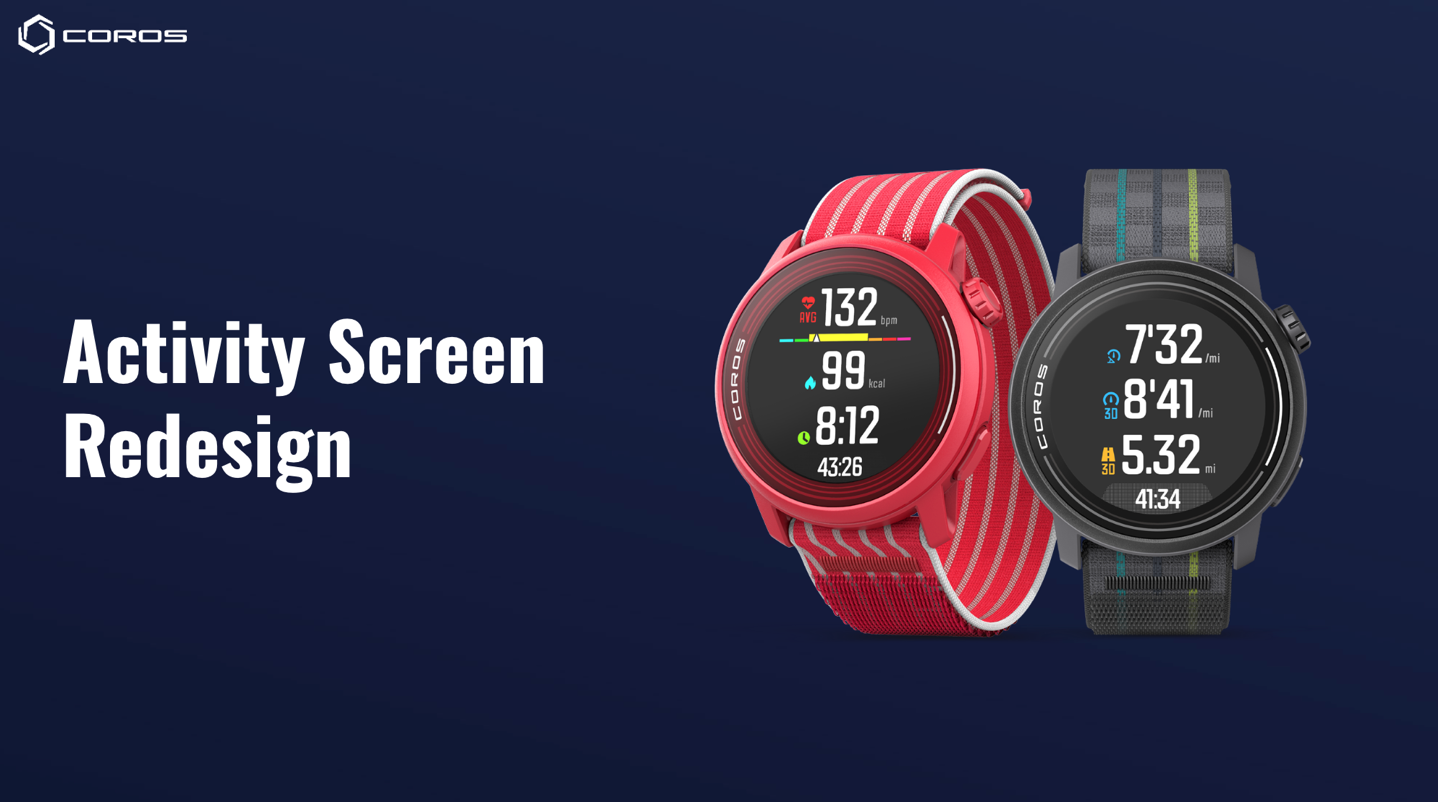
Again, remember these are now available in public beta, per the link/schedule above.
It’s good to see COROS continuing to add features to their watches. In particular, I’m keen to see how they could expand on some of the screen mirroring features, especially around navigation, to allow quicker/easier phone-driven navigation routes pushed back to the watch on the fly (akin to what Wahoo does for their bike computers). Still, it’s definitely useful in it’s current form.
With that – thanks for reading!


0 Commentaires